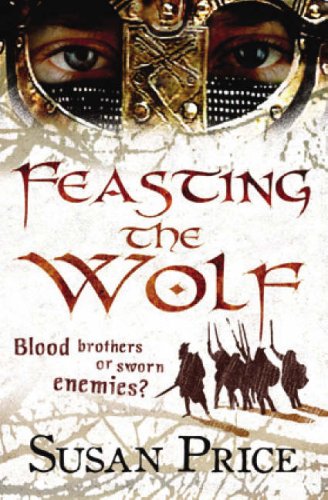Feasting the Wolf
“Feasting the wolf” means leaving dead on the battlefield – and there is plenty to feast on in this dark tale of Viking adventure.
Two 15-year-old Shetland boys, Ottar and Ketil, leave home to join a Viking warship headed for the north-east coast of England. Ottar, a landless youngest son, dreams of gaining money and status; Ketil, from a close-knit farming family, is happy at home and reluctant to leave, but pushed into it by his friendship with Ottar. When the boys join the crew of Wave Strider they take an oath to obey the master, Eyulf – but Eyulf is a weak leader who allows his men to torment Ketil. The boys’ friendship is tested when Ketil rebels and goes to join another ship led by Thorkel, a hard man but a better master.
The story itself is quite slight and the interest is all in the tensions between the characters. We see how the Vikings dig in and build a fort from which they can attack Saxon settlements, and how they survive the long, cold winter. In the spring Thorkel’s and Eyulf’s bands are sent to attack and pillage a monastery, and it is here that the final drama is played out. The raiders are hard, pitiless men, but they have their own code of honour. Thorkel deals fairly with his men, protects them and commands their respect, yet he is ruthless in his treatment of Saxon captives, who are either sold as slaves or killed. A sense of horror builds through the final part of the book, and the writing conveys this: a nun expecting to have her throat cut “shrilled like a rabbit in a snare, in a terror that turned Ketil cold.”
This is powerful writing that tells it as it must have been. It’s a bitter story, but compelling and utterly convincing.










